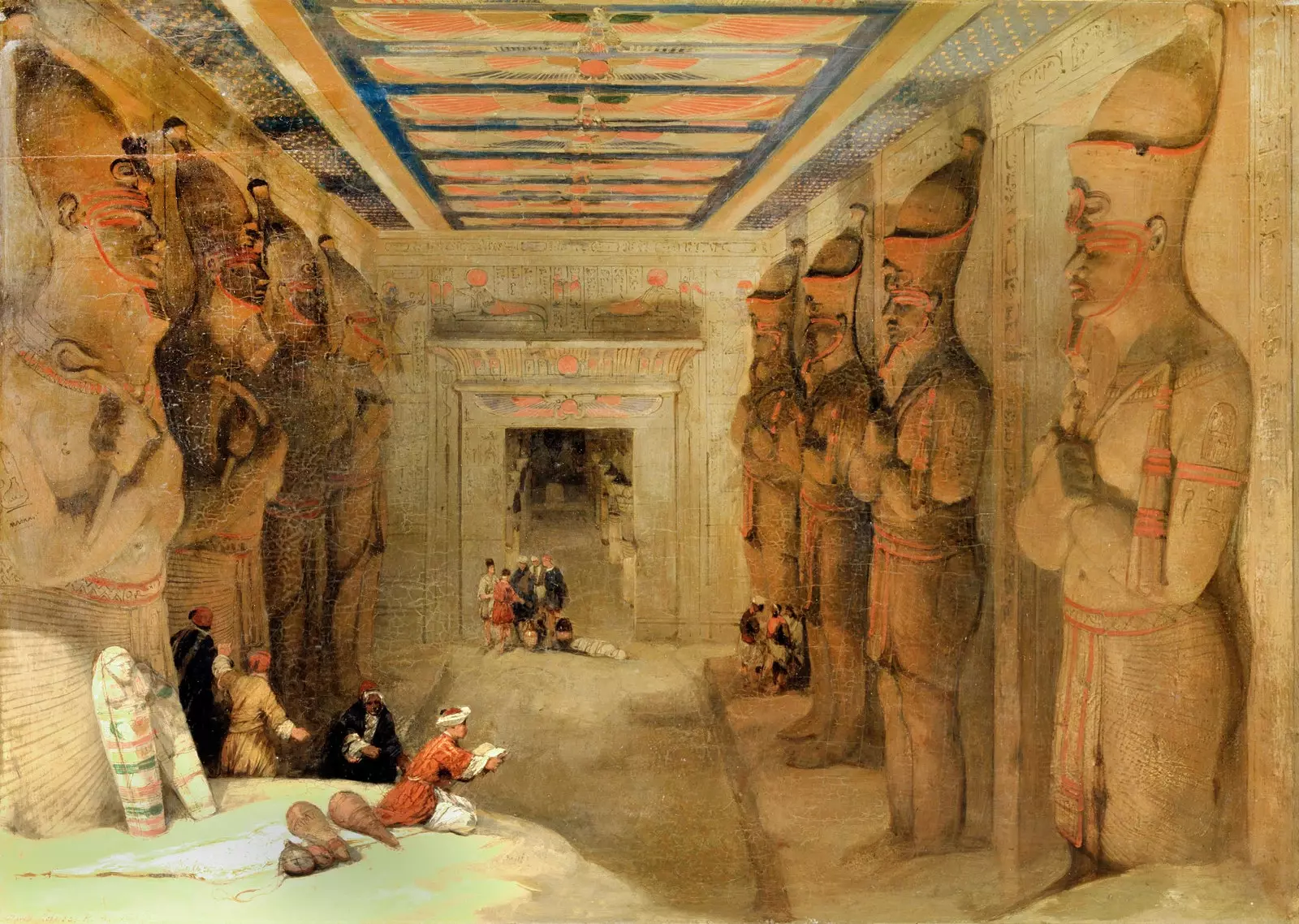
'The Hypostyle Hall of the Great Temple at Abu Simbel', David Roberts
You can, but it is difficult. As we move further away on the map, the destinations become unlikely. The Christmas getaway to any destination beyond the European Union faces vetoes and prohibitions. Traveling has become an upcoming act, close.
To jump to the tropics or to another hemisphere, it is necessary to find alternative routes, and one of them is to seek the company of painters travelers who traveled the world in the 19th century . So, the Orient was the great destination, from Morocco to Japan, but they also crossed Latin America and crossed the Atlantic, the Arctic and the Pacific.
His scenes suggested exoticism and adventure at a time when travel, for very different reasons than today, was restricted to a minority. Among them, we have selected five images that take us to places that we feel are unattainable today, but that will soon be within reach of a flight.
'THE GREAT TEMPLE OF ABU SIMBEL', BY DAVID ROBERTS
Scotsman David Roberts shaped a vision of Egypt. Before embarking on his journey he designed sets, so his works are often designed to make a theatrical impression through the scale and perspective changes.
Few travelers arrived in 1838 at Abu Simbel . It was necessary to descend 850 kilometers from Cairo along the Nile to reach the set of temples created by Pharaoh Ramses II in the 13th century BC. Roberts landed in Nubian looking for monuments to the eastern album of him before heading to Palestine, Jordan and Arabia.
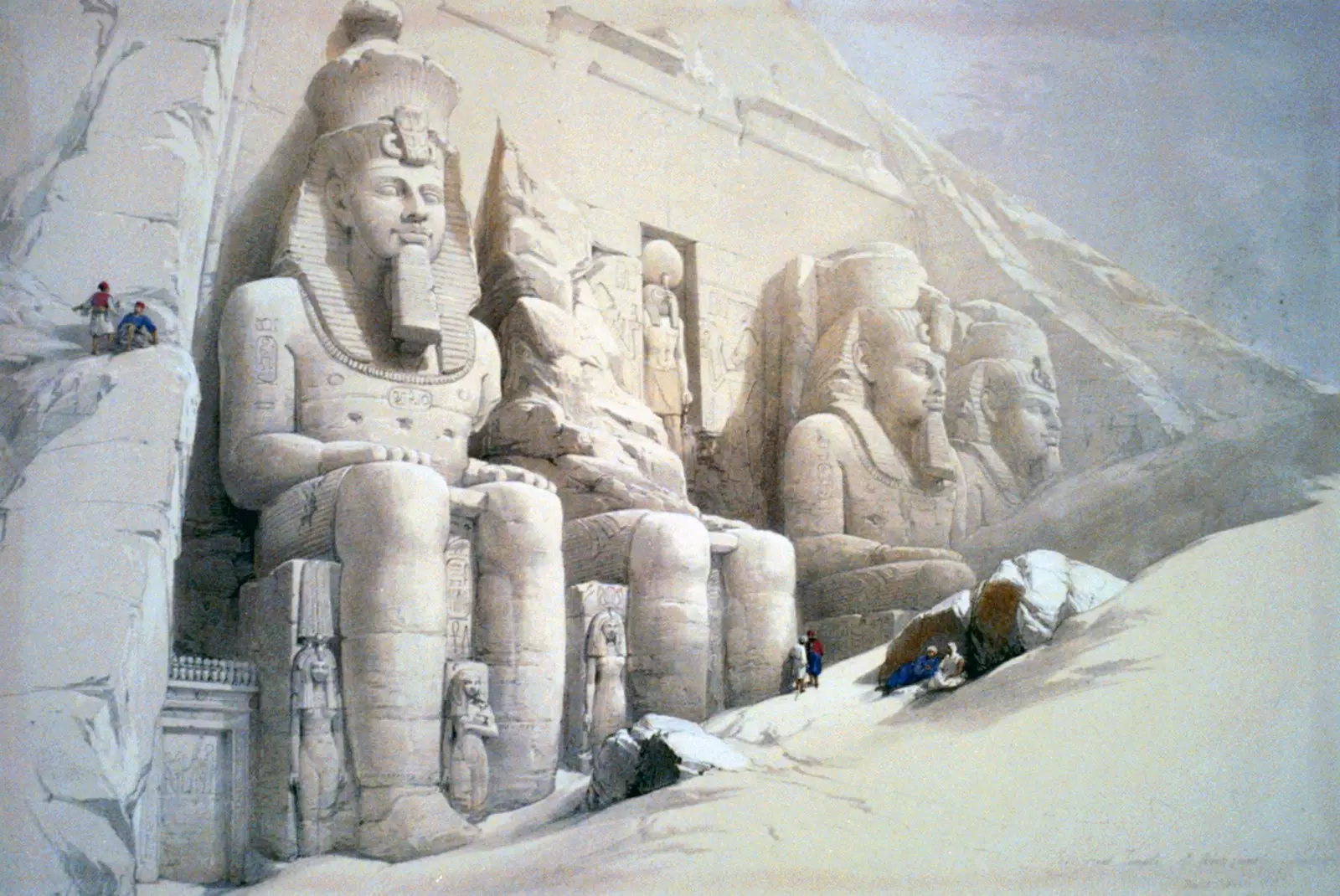
The Great Temple of Abu Simbel, by David Roberts
Then, the four seated colossi of the facade were partially sunk in the sand. Roberts captured them from different points and went inside. The hypostyle hall had been taken by the Bedouins as a refuge. The statues of Osiris , god of the afterlife, flanked a space intended for bonfires. In the background, in the sanctuary, the sun illuminated the statues of the gods twice a year.
'COTOPAXI', BY EDWIN CHURCH
Edwin Church he made two trips to Quito, which he used as a base to explore the Colombian Andes and altiplano. The monumental canvases in which he depicted Andean landscapes made him one of the most celebrated painters in the United States. Inspired by the scientist and explorer Alexander von Humboldt , he represented the fauna and flora of the continent with extreme precision.
The Cotopaxi volcano is 50 kilometers south of Quito . Its last eruption dates back to 1877, so to see it as Church represented it, a new geological convulsion would be necessary. The calm allows you to explore the national park that surrounds it by bicycle, embark on a hiking trail or tackle its climbing.
Not far from the volcano is the lagoon Quilotoa, a greenish volcanic caldera . Fumaroles and springs of warm water persist at the bottom of the lake. The waterfall is an artistic license from Church, so the lagoon can be safely crossed by boat or kayak.
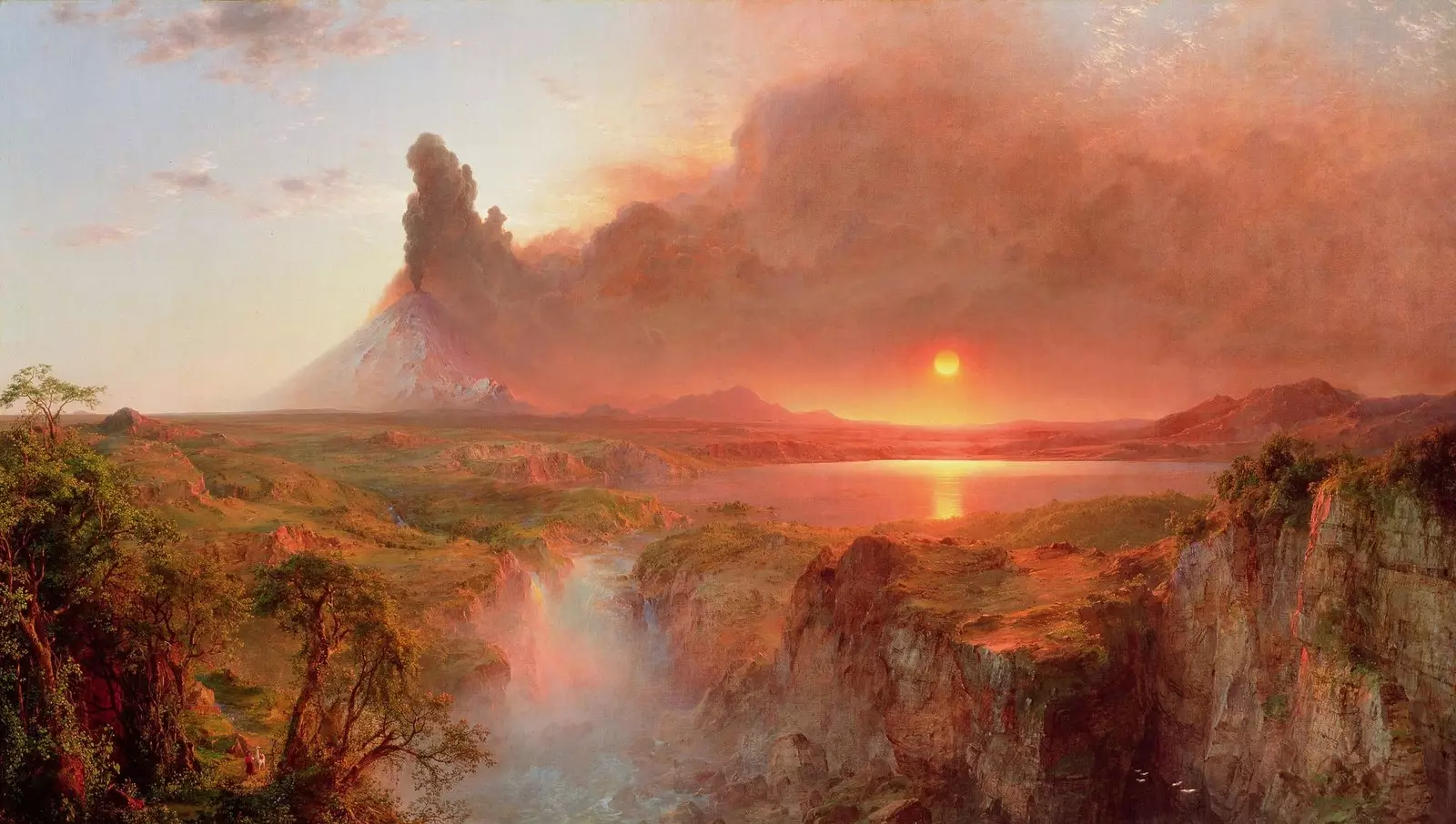
'Cotopaxi', Edwin Church
'THE TAJ MAHAL', BY EDWIN LORD WEEKS
Edwin Weeks He took notes and photographs that he transferred to canvas in his Paris workshop. He came from a prosperous Boston family that supported his penchant for art and his wanderlust. Latin America, Egypt and Morocco were his first stops.
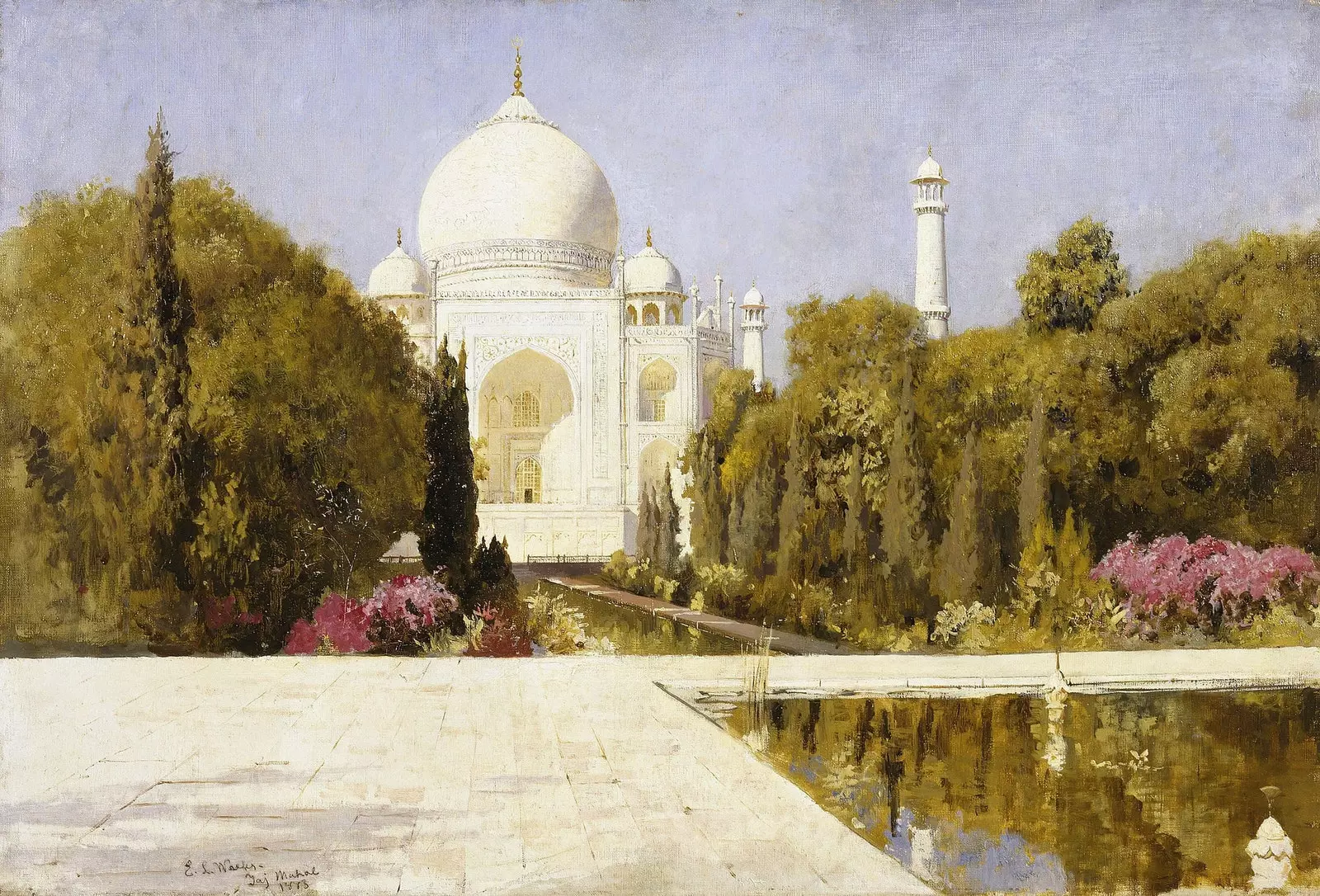
'Taj Mahal' by Edwin Lord Weeks
But it was in India where he experienced the revelation of the oriental. The crowd on the ghats of Varanasi, the harnessed elephant in the fortress of Rajasthan, the arrival of the maharajah at his palace. The Taj Mahal, today bare among geometric ponds, was then wrapped in a lush garden . in his book From the Black Sea through Persia and India , he wrote:
“The cypress trees lead the eye to the majestic dome that rises, white and dazzling, at the end of the view. . . like a summer cloud in the clear sky. . . so full of transparent tints and nuances of mother-of-pearl like the lining of a shell".
'THE KING CONTEMPLATES', BY ROSA BONHEUR
The lioness rests while the lion watches, attentive. Puppies emulate their attitudes . They seem perched on a hillside. Perhaps they follow the movements of the animals that pass through the valley. The scene could be set in the Serengeti, in Tanzania , or elsewhere in the East African savannah.
Rosa Bonheur's father was a painter. It was he who introduced her to her trade. At the Louvre she copied Poussin and Géricault , and fixed his interest on the animals that appeared in the works of the great masters. He visited slaughterhouses, performed dissections, consulted zoologists and naturalists, attended anatomy classes at the veterinary school.
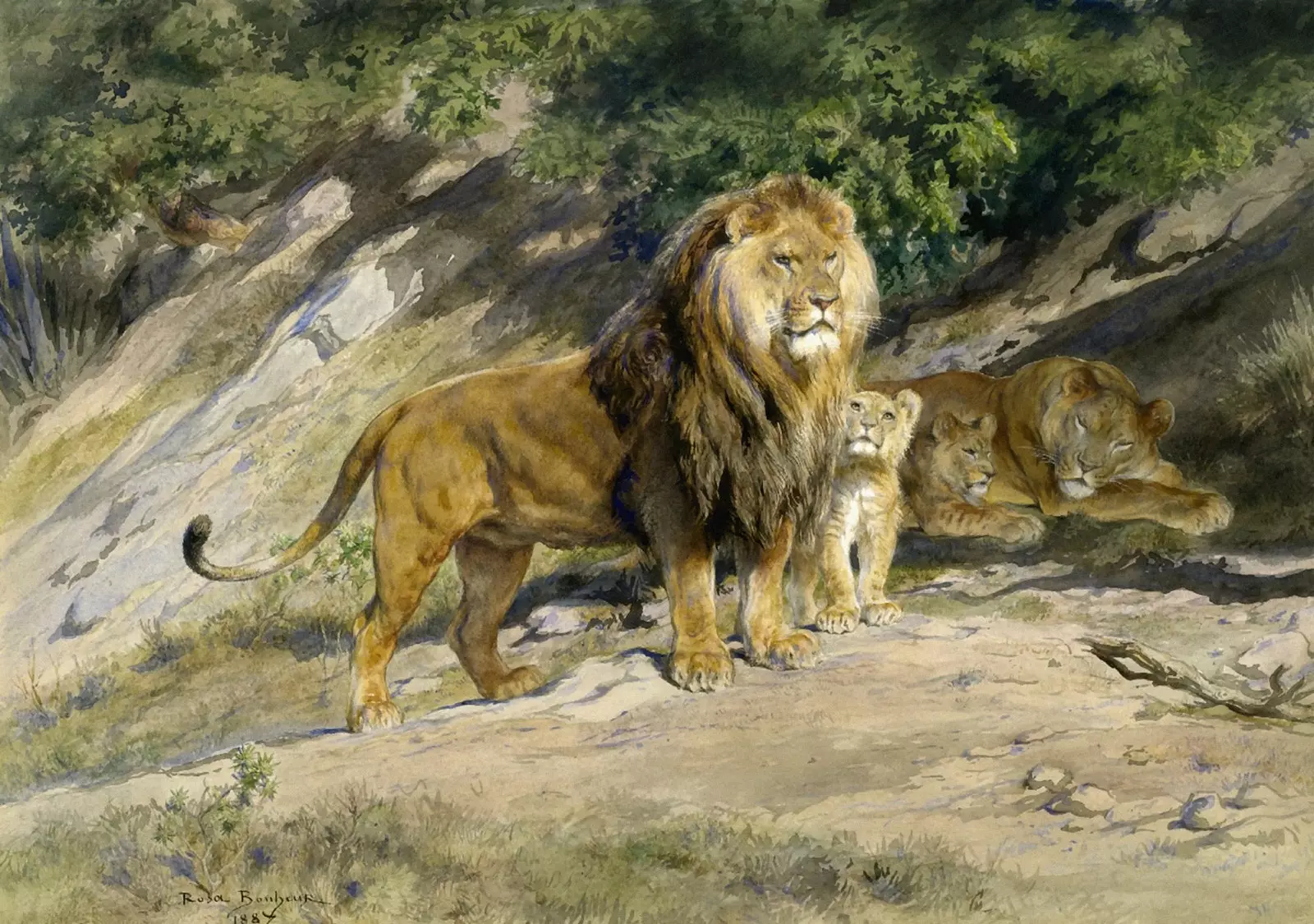
'The king contemplates', Rosa Bonheur
The scenes of him with cows, horses, dogs, deer and, of course, lions, achieved a high price. He settled in Château de Bry , not far from Paris, where he met, as in a Noah's ark , the species destined to appear in his oil paintings.
Among them was a pair of Atlas lions . The title of the work does not only allude to the topic linked to the feline. The majesty of the lion and his firm expression take us to an imminent rupture of calm. The king could roar, or descend to the plain in search of his pack.
'BETWEEN THE WAVES', BY IVAN AIVAZOVSKY
The sea it is, in itself, an open road, an invitation to get away. Russian Ivan Aivazovsky dedicated his life to painting it . He was hired as an official artist by the Russian Navy . His mission was to represent seascapes, coastal scenes and naval battles. In the 19th century, specialization was common in the practice of painting. Aivazovsky achieved fame by painting the surf.
Crimean Armenian , he was trained in Italy, Germany and France. He lived a large part of his life at sea, heading for maneuvers in the Baltic and missions to Constantinople and Rhodes. His pictorial memory was legendary. He did not take notes on board. He dumped the record stored in his memory upon returning to his study.
His works reached Paris, London, the United States. He retired to Feodosia, Crimea, his hometown . There the sea remained calm, oblivious to the storms that filled his canvases. Even so, the painter continued to remember the waves, the wind and the landscapes of strange lands. The distance catches.
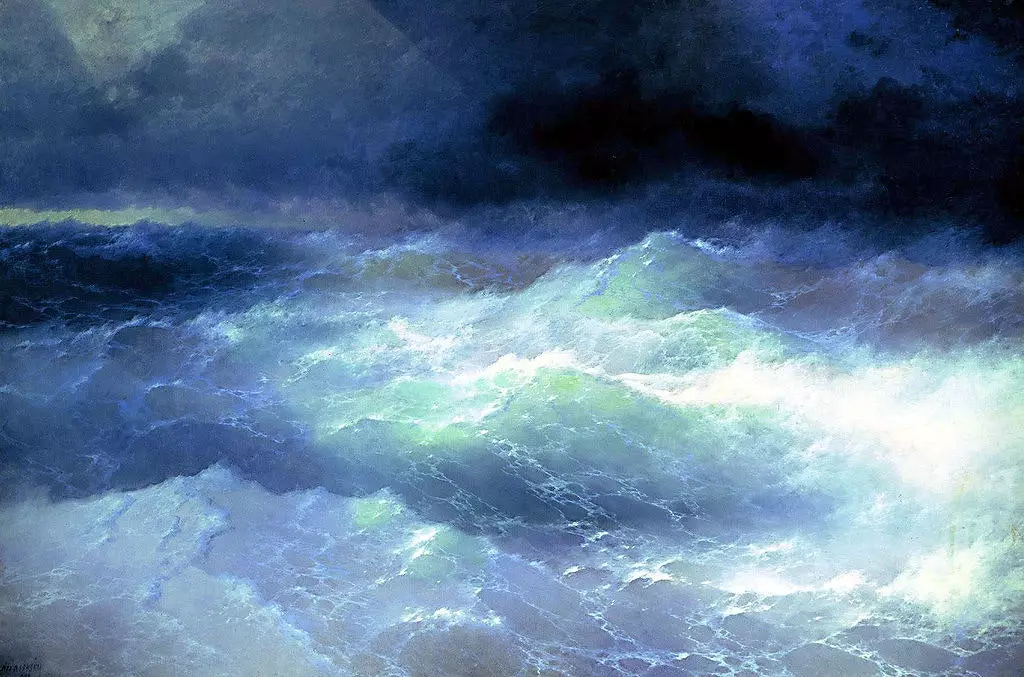
Between the waves, by Ivan Aivazovsky
